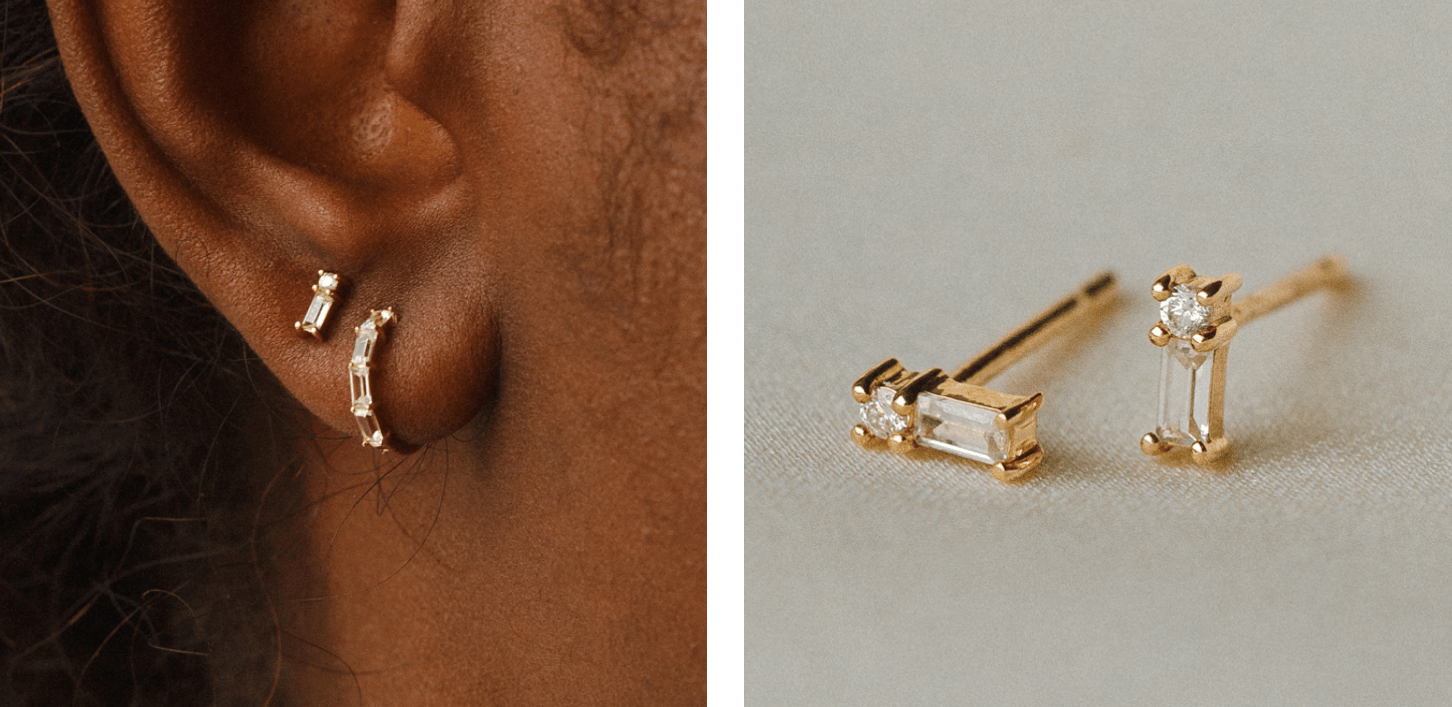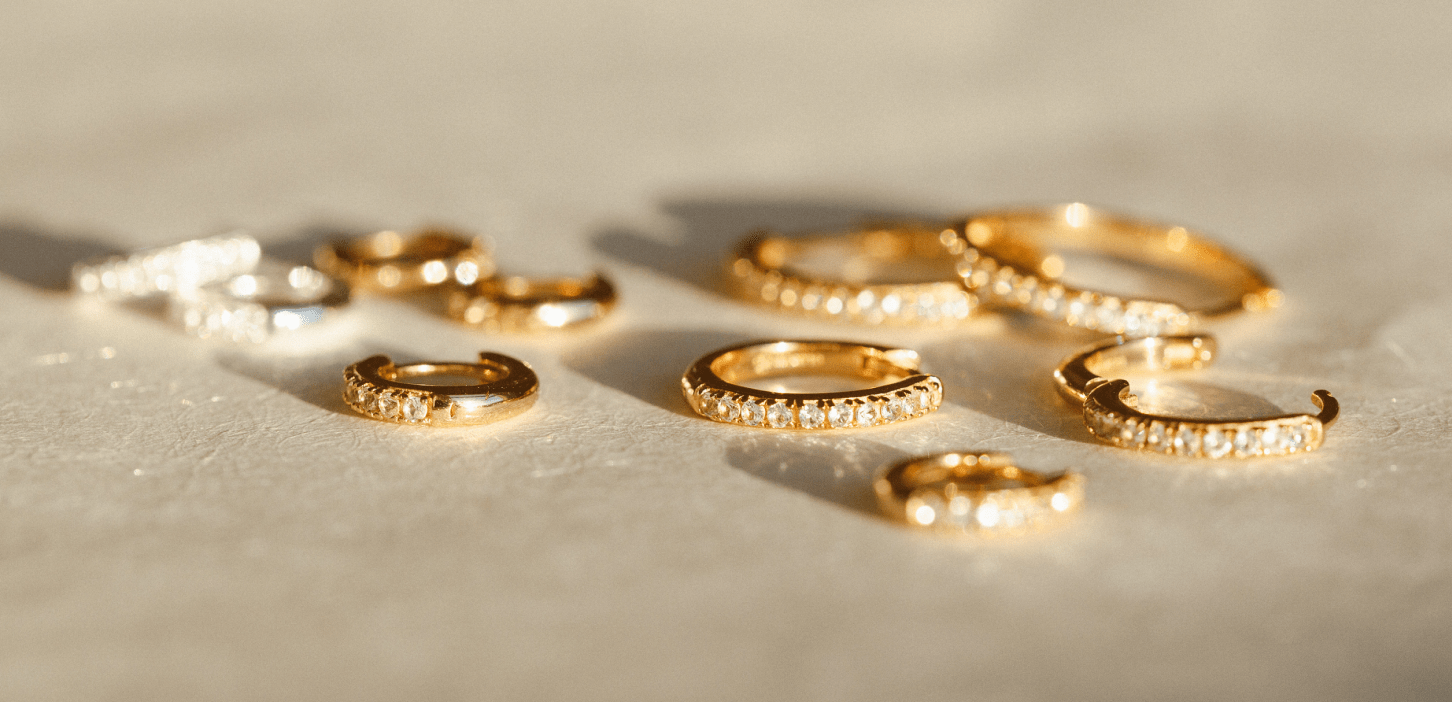What Are Lab-Grown Gemstones? | GLDN

What Does Lab Created Mean in Jewelry?
Lab-created gemstones are also known as lab-grown gemstones, lab gemstones, man-made gemstones or synthetic gemstones, depending on who you ask. This simply means that the gemstone in question was created in a lab instead of being extracted from the earth.
What Are Lab Created Gemstones?
Lab-grown gemstones are identical to earth-mined gemstones in look, quality and composition—meaning they’re the exact same physically and chemically—but they’re more environmentally friendly and affordable since there’s no mining involved! Lab-grown gemstones are just as genuine as natural gemstones (despite what these names might suggest).
How Are Lab Created Gemstones Made?
There are a few different ways to create a lab-grown gemstone, but two popular methods of gemstone synthesis are flux fusion and flame fusion (processes of actually growing gemstones)! Essentially, you carefully select raw materials suitable for growing each gemstone, and use a growth chamber or reactor to mimic the natural process of a gemstone being created in the earth, through temperature and pressure.

Are Lab-Created Gemstones Real?
Yes! Natural gemstones and man-made gemstones are both made of the same materials with the same atomic structure and crystal habit, making them physically and chemically identical. Even a professional gemologist would identify a lab-created gemstone as a real gemstone.
What’s the Difference Between Lab Created vs Natural Gemstones?
Since lab-grown and earth-mined gemstones are identical in structure and composition, the only real difference is how they’re made—one is grown in a lab, and one is extracted from the earth. That, and lab-grown gemstones are typically more affordable than their mined counterparts, because lab-grown gemstones are more accessible and easy to produce.
What Are Lab-Grown Sapphires?
Sapphires have been a prized gemstone for ages thanks to their beauty, hardness and ideal choice for jewelry—but, eventually, their demand exceeded their natural supply. Unsurprisingly, sapphires (and rubies) became one of the first gemstones to be synthesized over 100 years ago, and these techniques are still being used to lab-grow sapphires today. So, what are lab-grown sapphires? Can you tell the difference between natural sapphires and lab-grown sapphires? Let’s talk about that.
How Were Lab-Grown Sapphires Discovered?
After years of experimentation, the first successful lab-grown gemstones were created in 1877 by chemist Edmond Fremy, resulting in beautiful stones with stunning colors. The production of lab-grown gemstones really started taking off after WWII, which led to advances in creating synthetic gemstones—meaning larger crystals with fewer imperfections. At first blush, a lab-grown or man-made gemstone might seem less valuable or beautiful than a natural gemstone…but, in fact, lab-grown gemstones actually offer several advantages over their mined counterparts. Lab-grown gemstones are more affordable, readily available and consistent in quality and clarity.
Are Lab-Grown Sapphires True Sapphires?
Natural and lab-grown sapphires are both made of the same materials, with the same atomic structure and crystal habit—making them physically and chemically identical! Gemology labs would identify both lab-grown and natural sapphires as forms of corundum, a rock-forming mineral.
Any Differences Between Lab-Grown and Natural Sapphires?
Both natural and lab-grown sapphires have an identical chemical composition, but there are a few differences you might find upon closer inspection. For one, lab-grown sapphires typically have fewer natural inclusions and impurities than mined gemstones (since they’re grown in a controlled environment without temperature variances).
- Difference in hardness: Around a 9 on the Mohs scale, sapphires are beloved for their scratch-resistant qualities, making them the perfect choice for everyday wear. When it comes to lab-grown sapphire versus natural sapphires, lab-created sapphires usually have a slightly higher hardness grade than natural sapphires, making them even more durable and long-lasting.
- Difference in color: In general, lab-grown gemstones tend to be less vibrant than natural gemstones…but have more even color distribution than natural stones (which may display uneven patches of color). Plus, since lab-grown gemstones are, well, grown in a lab, they can be made in a wider range of hues than natural stones—the perfect choice if you’re looking for something unique.
- Difference in clarity: Clarity refers to a gemstone’s number of flaws or inclusions. As we mentioned above, lab-grown gemstones have fewer flaws than natural gemstones, since they’re created in a controlled environment. If you’re looking for an “eye clean” sapphire—that is, one without any visible flaws—lab-grown is the way to go.
- Difference in sparkle: Lab-created sapphires are typically more sparkly than natural gemstones due to, again, the lack of flaws and inclusions in the stone! While white sapphires will never be quite as sparkly as a diamond, a lab-grown white sapphire is a great choice if you want a diamond-like look without the diamond cost.
Are Lab-Grown Sapphires A Good Choice?
Chemically identical to natural sapphires with the same hardness, density and refraction, lab-grown sapphires are an incredible choice in gemstone. For one, since they’re created in a lab, there aren’t the same ethical concerns as natural, mined gemstones, and they’re often less expensive than natural sapphires due to demand. For these reasons, many shoppers today actually prefer lab-grown sapphires over their natural counterparts (and we can see why)!
What Is a Lab-Grown Diamond?
Onto our next favorite clear gemstone: the lab-grown diamond. Like lab-grown sapphires, lab-grown diamonds are just as “real” as mined diamonds, with the same look, quality and composition. The only difference? Lab-grown diamonds are created using mined diamond “seeds” instead of being extracted from the earth. This is a state-of-the-art technology that replicates the natural conditions under which diamonds were formed in the earth. The result? A more sustainable diamond with the exact same lattice crystal structure as a mined diamond…that can cost up to 85% less.
Are Lab-Grown Diamonds Real Diamonds?
Sure are! Lab-grown diamonds are 100% real diamonds, and are chemically, physically and visually identical to earth-mined diamonds. The demand for lab-grown diamonds has skyrocketed in recent years (due to ethics and sustainability concerns of mined diamonds) and the engineering methods of lab-created diamonds have been perfected to produce beautiful, economical, real gemstones for life’s biggest moments.
Any Differences Between Lab-Grown and Natural Diamonds?
When we read about lab diamonds vs. natural diamonds…what we want to know is this: are lab-grown diamonds real-diamonds? We’re thrilled to say: yes, they are! Visually, chemically and physically speaking, a man-made diamond is no different than a natural diamond. But don’t just take it from us: when lab-grown diamonds are tested by a gemologist, they’ll register as real diamonds—and sometimes, even the most advanced gemologists are unable to tell the difference between a lab-created and earth-mined diamond.
Are Lab-Grown Diamonds More Ethical?
Lab-grown diamonds are verifiably more ethical than earth-mined diamonds. Purchasing a lab-created diamond is the #1 way to ensure your diamond has been ethically produced and ethically sourced. In fact, global efforts (like the UN’s Kimberley Process) continue to work towards eradicating blood diamonds from the global market in favor of conflict-free diamonds. The best way to ensure you’re getting a conflict-free diamond? Purchasing a lab-grown diamond with 100% transparency of its origins.
Are Lab-Grown Diamonds Sustainable?
Compared to earth-mined diamonds, lab-grown diamonds are less disruptive and more sustainable—so, to answer your question, yes! That said, as with any production process, there is a great deal of energy involved to actually create the artificial gemstones. More and more lab diamond producers, however, are turning to solar energy to offset the energy used in creating these gems.
What’s the Cost of a Lab-Grown Diamond?
Thanks to technological improvements in creating lab-grown diamonds, their prices are (on average) 60-85% less than earth-mined diamonds. It’s still unclear whether lab diamonds will have the same resale value as their natural counterparts, but given their recent popularity, we assume their resale value will only grow.
Discover the Beauty of Lab-Grown Gemstones
With the same look, quality and composition of earth-mined gemstones—and fewer ethical and sustainability concerns—there’s no reason not to choose a lab-grown gemstone in your next jewelry piece! From lab-created white sapphires to lab-created diamonds, our Ethereal Essentials collection is full of lab-grown gemstones made for everyday wear.
We hope this was helpful. Happy gemstone hunting!
Team GLDN ✨





Leave a Comment